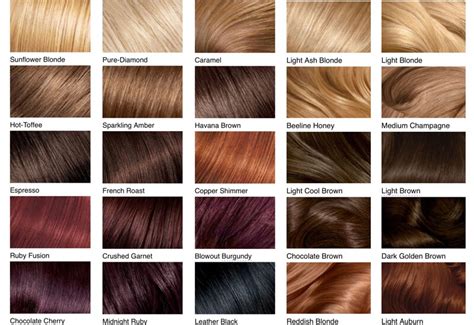Choosing the perfect hair color can be a daunting task. With countless shades and hues to choose from, it can be difficult to know where to start. But fear not! This comprehensive guide will help you decode the intricacies of hair color and find the perfect shade to complement your skin tone, eye color, and personal style.

Understanding Skin Tones and Hair Color
The key to finding the perfect hair color is to understand your skin’s undertone. Undertones fall into three main categories:
- Cool: Skin with pink, blue, or reddish undertones.
- Warm: Skin with yellow, golden, or peach undertones.
- Neutral: Skin with a balanced mix of warm and cool undertones.
In general, cool skin tones complement ash, blue-based, or violet-based hair colors. Warm skin tones look best with warm, golden, or copper-based shades. Neutral skin tones can rock both cool and warm hair colors.
Eye Color and Hair Color
Your eye color can also influence your hair color choice:
- Brown eyes: Can handle a wide range of hair colors, including blonde, brunette, red, and black.
- Blue eyes: Cool hair colors like ash blonde, silver, or violet enhance blue eyes.
- Green eyes: Can be complemented by warm or cool hair colors, such as strawberry blonde, auburn, or emerald green.
- Hazel eyes: A versatile eye color that looks great with both warm and cool hair shades.
Personality and Hair Color
Your personal style and preferences also play a role in choosing a hair color. Consider the following:
- Classic: Stick to natural or subtle shades like brunette, black, or blonde.
- Edgy: Experiment with vibrant or unconventional colors like blue, green, or purple.
- Feminine: Opt for soft, romantic shades like rose gold, pastel pink, or lavender.
Trending Hair Colors for Women
According to a survey by the American Academy of Dermatology, the following hair colors are trending in 2023:
- Strawberry blonde: A vibrant mix of blonde and strawberry red.
- Auburn: A warm, reddish-brown shade.
- Ash blonde: A cool, gray-toned blonde.
- Caramel brown: A rich, warm brown.
- Ombre: A gradual transition between two shades, such as black to blonde.
Hair Color Tips and Tricks
- Consider your haircut: Different hair lengths and styles complement certain hair colors better than others.
- Test out the color: Use a temporary hair color spray or dye to experiment with a new shade before committing.
- Go professional: If you’re unsure of which hair color to choose or need a dramatic transformation, consult a professional hair stylist.
- Maintain your color: Use color-protecting shampoos and conditioners to prolong the vibrancy of your hair color.
FAQs
1. What hair color makes me look younger?
Warmer, brighter hair colors can help create a youthful glow.
2. Can hair color damage my hair?
Chemical hair dye can damage hair, but using high-quality products and following proper application techniques can minimize damage.
3. How often should I touch up my hair color?
Touch-ups are typically recommended every 4-6 weeks for root coverage.
4. What is the best hair color for gray hair?
A warm, golden brown or copper hair color can blend naturally with gray hair.
5. How do I choose a hair color for my skin tone?
Consider your skin’s undertones (cool, warm, or neutral) and choose hair colors that complement them.
6. What are the best hair colors for short hair?
Short hair can handle bolder, more vibrant hair colors.
7. What hair colors are best for long hair?
Long hair can support a wider range of hair colors, from natural to unconventional shades.
8. What hair colors are best for thick hair?
Thick hair can handle darker, more intense hair colors.
Conclusion
Choosing the perfect hair color can elevate your look and boost your confidence. By understanding your skin tone, eye color, and personal style, you can narrow down the possibilities and find the best hair color that suits you. Remember, hair color is an expression of your individuality, so feel free to experiment and embrace the perfect shade that reflects your true self.
